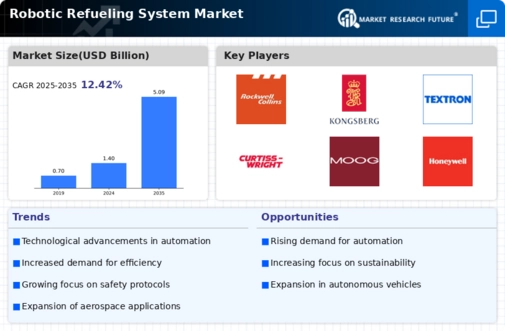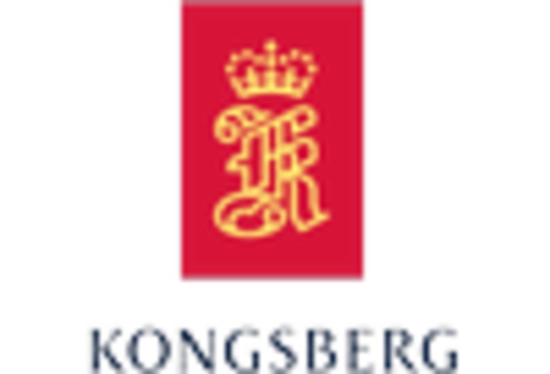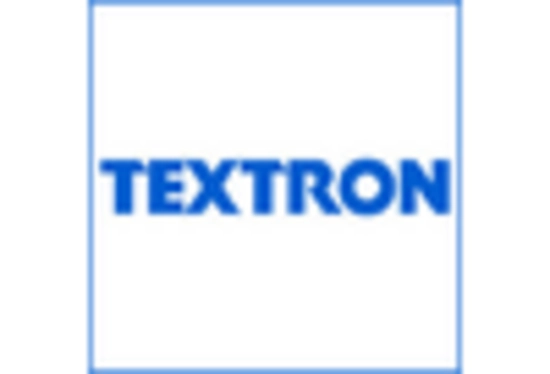Regulatory Support for Automation
The Robotic Refueling System Market benefits from regulatory support aimed at promoting automation and safety in fueling operations. Governments are increasingly recognizing the potential of robotic systems to enhance safety and efficiency in hazardous environments. This regulatory backing is likely to encourage investment in robotic refueling technologies, as companies seek to comply with new standards and regulations. Recent initiatives have shown that regions with supportive policies for automation have seen a 40% increase in the adoption of robotic systems in various industries, including aviation and logistics. Such regulatory frameworks are expected to further propel the growth of the robotic refueling market.
Focus on Cost Reduction and Efficiency
The Robotic Refueling System Market is significantly influenced by the focus on cost reduction and operational efficiency. Companies are under constant pressure to minimize expenses while maximizing productivity. Robotic refueling systems present a viable solution, as they can reduce labor costs and enhance the speed of refueling operations. Market data indicates that organizations implementing robotic systems can achieve up to a 20% decrease in operational costs. This emphasis on cost efficiency is driving the adoption of robotic refueling technologies, as businesses recognize the long-term financial benefits associated with automation.
Technological Advancements in Robotics
The Robotic Refueling System Market is experiencing a surge in technological advancements, particularly in robotics and automation. Innovations in artificial intelligence and machine learning are enhancing the capabilities of robotic systems, allowing for more efficient and precise refueling operations. As these technologies evolve, they are likely to reduce human error and increase operational efficiency. According to recent data, the integration of advanced robotics in refueling systems could potentially lead to a 30% reduction in refueling time, thereby improving overall productivity. This trend indicates a strong market demand for sophisticated robotic solutions that can streamline refueling processes across various sectors, including aviation and automotive.
Rising Demand for Efficient Fueling Solutions
The Robotic Refueling System Market is driven by an increasing demand for efficient fueling solutions. As industries seek to optimize their operations, the need for faster and more reliable refueling methods becomes paramount. Robotic refueling systems offer a solution that minimizes downtime and enhances service delivery. Market analysis suggests that the adoption of these systems could lead to a 25% increase in operational efficiency for companies in the transportation sector. This growing demand is indicative of a broader trend towards automation and efficiency, positioning robotic refueling systems as a critical component in modern fueling infrastructure.
Increased Investment in Infrastructure Development
The Robotic Refueling System Market is witnessing increased investment in infrastructure development, particularly in sectors such as aviation and transportation. As the demand for efficient fueling solutions grows, stakeholders are allocating resources to upgrade existing refueling infrastructure with robotic systems. This trend is supported by data indicating that investments in automated refueling infrastructure can lead to a 35% improvement in service delivery times. The influx of capital into this sector is likely to accelerate the deployment of robotic refueling systems, thereby enhancing the overall efficiency and reliability of fueling operations.
















Leave a Comment